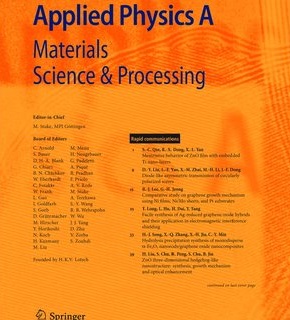Impact of crystalline structure type on the optical and catalytic performance of zinc molybdate nanoparticles for hydrogen production
Abstract
Two distinct methodologies have been employed for the synthesis of ZnMoO4 nanoparticles, specifically sol-gel and hydrothermal techniques. The sol-gel approach resulted in the formation of a singular-phase triclinic α-ZnMoO4, in contrast, the hydrothermal technique produced a monoclinic β-ZnMoO4. Synchrotron x-ray diffraction patterns were measured and full crystal structure determination for both phases was achieved utilizing Rietveld refinement method. Further structural investigation was performed employing Raman spectroscopy. A comparative study of the optical properties of obtained samples was performed utilizing diffuse reflectance spectroscopic measurements. The band gap energy was determined for the triclinic phase, 4.29 eV, whereas for the monoclinic is 3.0 eV. Both phases have a similar broad photoluminescence spectrum but with some differences in positions of subpeaks; the PL peak intensity of the α-phase is almost half that of β-phase. The α- and β-phases of the ZnMoO4 system are regarded as effective catalysts for hydrogen production utilizing sodium borohydride (NaBH4). ZnMoO4 sample with a triclinic structure has the maximum hydrogen production rate (7.64 mL s− 1g− 1). The rates of hydrogen volume developed at the different temperatures were performed. The activation energy, enthalpy of activation and the entropy of activation were estimated for α-phase ZnMoO4 sample.


 求助内容:
求助内容: 应助结果提醒方式:
应助结果提醒方式:


